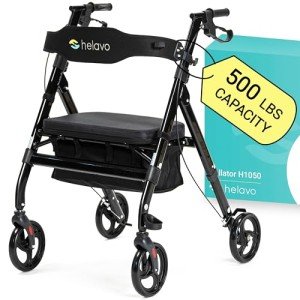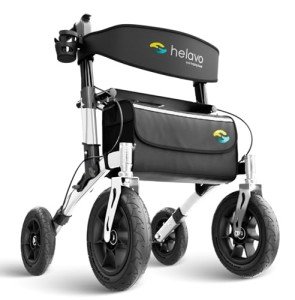Easy-To-Use Walker Techniques To Simplify Your Daily Life Easy-To-Use …
페이지 정보

본문
The Ultimate Guide to Easy-To-Use Walkers: Empowering Mobility for All
Mobility is an essential element of everyday living, and for numerous individuals, especially the elderly and those with mobility obstacles, walkers can considerably boost independence and security. An easy-to-use walker can be the difference between counting on assistance and restoring autonomy. This post intends to explore numerous types of walkers, their features, and how people can choose the best walker according to their requirements.
Understanding Walkers: Types and Features
Walkers are available in several designs customized to particular needs, levels of mobility, and individual preferences. The following table summarizes the most typical types of walkers, their features, and possible benefits.

| Walker Type | Description | Advantages |
|---|---|---|
| Requirement Walker | A lightweight, fundamental frame with four legs. | Deals stability and support; easy to maneuver. |
| Two-Wheeled Walker | Features two wheels at the front for easy mobility. | Provides support while permitting smoother motion. |
| Four-Wheeled Walker | Likewise called a rollator, it has four wheels. | Enables greater mobility and consists of a Padded Seat Rollator Walker for resting. |
| Knee Walker | Designed for individuals with foot or ankle injuries. | Allows users to rest weight on the knee while sliding with the other leg. |
| Chair Walker | Integrates a walker with a Padded Seat Rollator Walker and storage. | Offers convenience for longer distances; excellent for resting. |
| Foldable Walker | Can be folded for easy transport and storage. | Mobility makes it ideal for travel. |
Factors to Consider When Choosing a Walker
Choosing the ideal walker is essential for guaranteeing security and comfort. Below are crucial elements to think about:
Mobility Level: Assess the user's existing mobility and balance. Those who require optimum stability might take advantage of a standard walker, while more mobile users may prefer a rollator.
Weight Capacity: Walkers are developed with specific weight limits. Constantly check the manufacturer's standards to guarantee security.
Height Adjustment: An effectively fitted walker is vital for convenience. Search for adjustable height alternatives to ensure it fits the user's stature.
Surface Type: Consider where the walker will mostly be utilized. Some walkers are much better matched for outdoor usage, while others might work best on carpets or indoors.
Storage Needs: If the user frequently carries individual products, walkers with baskets or trays might be advantageous.
Additional Features to Look For
Walkers have evolved to consist of numerous features intended at improving user experience. Some noteworthy features consist of:
Hand Grips: Ergonomically designed hand grips add to comfort and manage.
Brakes: For rollators, check for reliable brakes which offer included security when slowing down or stopping.
Weight: Lightweight products enhance maneuverability and ease of Transport Walker.
Seat and Backrest: For users who might require to rest, choices with seats and backrests offer much-needed support.
Devices: Consider additional items like trays, baskets, or lights that can improve walker performance.
The Benefits of Using a Walker
Picking an easy-to-use walker can bring many benefits for users and caregivers alike:
Increased Independence: Walkers lower dependence on others, empowering users in their everyday regimens.
Improved Safety: They supply important support and balance, lowering the danger of falls and associated injuries.
Enhanced Mobility: Walkers enable people to keep mobility even with restricted physical capabilities.
Activity Encouragement: Using a walker can motivate users to participate in routine movement, promoting total health.
Social Interaction: Increased mobility motivates users to participate in social activities, enhancing emotional well-being.
FAQs about Walkers
1. How do I know which walker is ideal for me?
Selecting the ideal walker includes evaluating your mobility needs, weight capacity, and individual choices. Consulting with a health care expert can likewise supply important insights.
2. Are walkers covered by insurance?
Lots of insurance plans, consisting of Medicare, will cover walkers if they are considered clinically required. It's best to talk to your prepare for specific protection information.
3. How can I preserve my walker?
Regular maintenance includes inspecting wheels and brakes for damage, cleaning up the frame, and inspecting rubber tips for wear.
4. Can I utilize a walker outdoors?
Yes, there are particular walkers developed for outdoor usage, such as four-wheeled rollators, which use greater stability on different surface areas.
5. What is the typical weight limitation for walkers?
Weight limitations can vary extensively depending upon the model and producer. Most basic walkers support as much as 300 pounds, however it's important to check individual specifications.

Conclusion: Choosing the Right Walker for Enhanced Mobility
An easy-to-use walker is more than just a tool; it represents self-reliance and self-respect for countless users. Whether it's a lightweight standard walker, a feature-rich rollator, or a specialized knee walker, the options are large and varied. By understanding the various kinds of walkers readily available, thinking about key features, and acknowledging the considerable advantages they offer, individuals can make informed decisions that align with their requirements.
Keep in mind, while this guide serves as a foundational resource, it is constantly a good idea to seek advice from with a healthcare professional for personalized suggestions. By selecting the ideal walker, people can actively take part in life, preserve their mobility, and pursue their passions without limitation.
- 이전글야구 무료중계 ❤️안전대왕.org❤️추천인1234|제재X 스포츠배팅 25.10.06
- 다음글Gluco Extend Beneath Review: Clinically-Proven Sweet Flower Extract For Supporting Healthy Blood Sugar Levels (2025) 25.10.06
댓글목록
등록된 댓글이 없습니다.


